How to renew cities with citizen-led renewable energy and building retrofits?
Author: Stevan Vujasinović
Source: Energy Cities: The European association of cities in energy transition
When it comes to energy communities and retrofits for renewables, there are common key ingredients for success across Europe, whether you look at experiences in EU member states or in the Western Balkans:
Citizens can have an active role in the transition to renewables as prosumers. And they are more and more knowledgeable about it. Increasingly, they seek ways of capitalising on the abundant potential of renewable energy, falling costs of technology and of digitalisation. All this is, against the background of a favourable EU legislative framework, is making it easier to work together with neighbours and local communities.
Local governments, which are still learning to get into new roles when it comes to participative and renewable energy production, are finding themselves sandwiched between the established energy players, on the one side, and – on the other – by the growing interest and demand from their own citizens and communities for support and solutions to sometimes challenging local circumstances, including building trust, effective but democratic decision-making, uneven capacities for investment, legal conundrums etc..
On April 20-21 April, Energy Cities and RES Foundation hosted an mPower webinar to help municipalities and communities across the Balkans harvesting renewables together through cooperatives or energy communities. The event included the Serbian Roadshow supported by the European Climate Foundation and with precious input from RESCoop and Friends of the Earth Europe.
What seems apparent from the contributions of some 100 participants in our two-day webinar both in the Member States and in the Western Balkans, is that those who wait for an “enabling environment” will miss out on the action, and those who already act actually set an example of what is possible and can inspire others (including legislators) to follow their steps. Everywhere, energy community trailblazers find themselves running an extra mile to find ways of coping with varied challenges demanding versatility and perseverance. The very least that local governments should do is listen carefully to their energy community entrepreneurs, prioritise fixing the regulatory and administrative bugs in the system where possible, and realise that their strongest assets in energy transition are their people: trust them and work together. The webinar has also proven that a network beyond city borders is crucial to push for better, citizen-driven energy policies.
It’s worth remembering that the clock is ticking, and we need to act. As we consider the challenges of democratic, shared action on renewing together, big business is eying up our most attractive rooftops and is traditionally more agile in seizing opportunities like this, especially in the Balkans.
So, whether you are a city leader or resident, begin renewing together now to reduce risks, build trust and ensure the financial and social returns on investment – for the long-term benefit of all citizens and for making our cities more liveable places.
Check out the presentations and video-digest of the event to get inspired by people who initiated community energy. With their best practices, you can start tackling technical, legal, financial and policy challenges that come with ambitious and community-based energy actions – and you will gain confidence in doing that together with your community partners.
